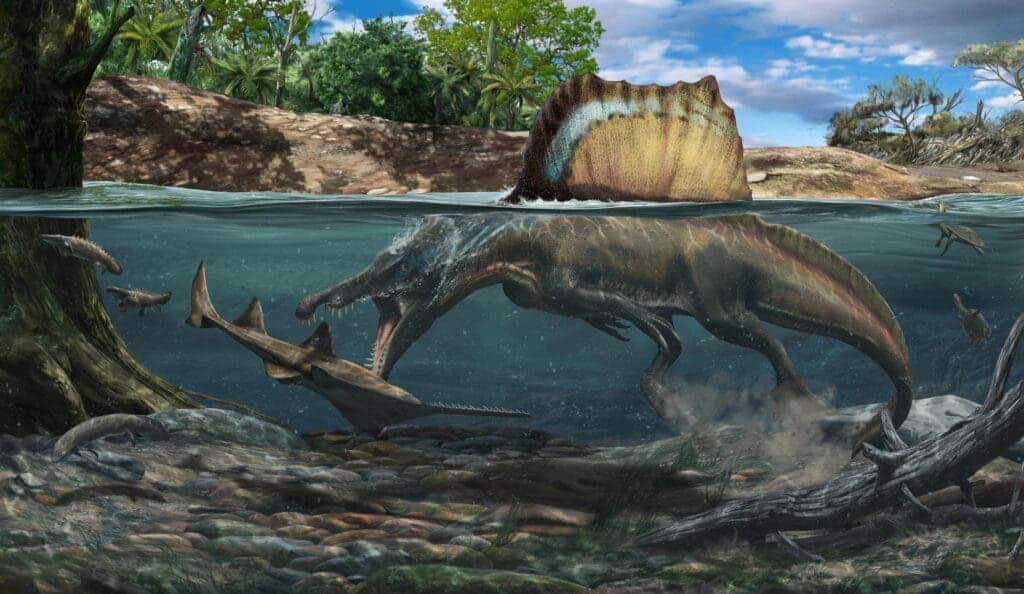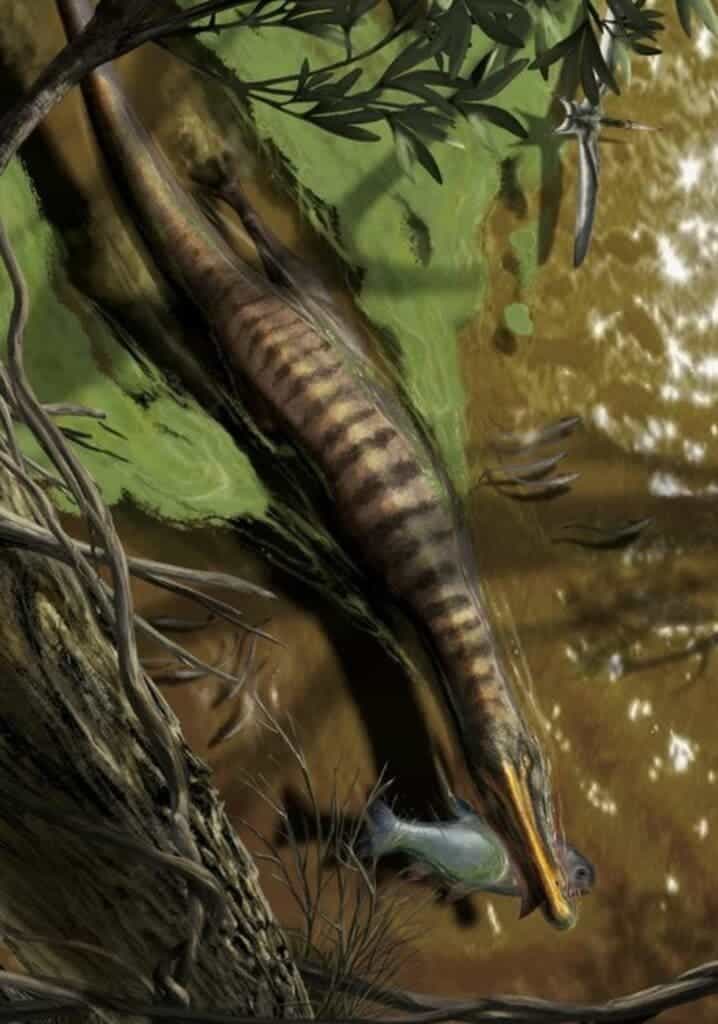Dinosaurs are usually seen as landlubbing creatures, but that couldn’t be farther from the truth. Spinosaurus, one of the meanest, badest, largest predators in history, was semi-aquatic according to a new study that analyzed hundreds of bones.

Spinosaurids are among the most distinctive and yet poorly-known large-bodied theropod dinosaurs. The species Spinosaurus, from which the name of the family & subfamily borrow their names, is the largest terrestrial predator known — even larger than the famous T. rex — and likely reached lengths of 15 to 16 meters (49-50 ft), perhaps even more. They lived between 145 million and 100 million years ago during the early Cretaceous.
These bipedal carnivores had large forelimbs with formidable enlarged claws, as well as crocodile-like jaws and cone-shaped teeth. Additionally, a 2014 study suggested that Spinosaurus had retracted nostrils, short hind legs, a fin-like tail, and paddle-like feet — and that was quite shocking. Could it be that Spinosaurus was aquatic? Most likely yes, judging from the very latest evidence, in which researchers from the Field Museum in Chicago found that these ancient predators had dense bones that were perfectly adapted for diving and hunting underwater.
The paleontologists painstakingly compared Spinosaurus fossils to 480 bones belonging to 290 different species, both living and extinct, including marine and flying reptiles, mammals, lizards, crocodiles, and birds. In particular, the researchers focused on femurs and ribs — the bones that have the strongest influence on motion and balance, so their shape and density are good indicators that a creature is terrestrial, aquatic, or a flyer.
This was a grueling and time-consuming process, but the effort paid off. This analysis first showed that aquatic animals have a much higher bone density than terrestrial ones, and the strength of the link was quite undeniable. Aquatic animals that submerge themselves underwater, such as seals and whales, have bones that are almost completely solid throughout, whereas terrestrial animals have bones that are hollow in their core.
The paleontologists analyzed the fossils of three distinct groups of spinosaurids: Spinosaurus, Baryonyx, and Suchomimus. Spinosaurus and Baryonyx had very dense bones conducive to swimming and hunting while submerged underwater, similar to crocodiles. Meanwhile, the third had hollow bones that are poor for swimming. Most likely, Suchomimus cruised above the water’s surface and dipped its snout in the water after prey when the occasion arose. None of the other 39 dinosaurs included in the comparative analysis were likely at ease in the water, the researchers found.

“Based on our results, there is no alternative explanation for the high bone density observed throughout their entire skeleton,” paleontologist Matteo Fabbri from the Field Museum of Natural History told Gizmodo. “Some incredibly heavy dinosaurs and mammals have higher density in the limb bones, but this is not widespread throughout the skeleton, making it easy to discern between aquatic or simply very heavy.”
Before they embarked on the study, the researchers suspected that spinosaurids felt at least partially at home in the water, judging from their anatomy. But drawing conclusions from a species’ anatomy alone is not wise. If you were to look at the bones of a hippopotamus and knew nothing about the animal, you probably wouldn’t suspect it’s aquatic — and oh, how hippos love water!
This is why the qualitative measurements conducted by this study are so valuable. But the insights are only as good as the data, which is why comparative research requires a lot of samples (i.e. fossils) and a ton of patience. According to Jingmai O’Connor, a curator at the Field Museum and co-author of the new research, studies like this that draw from hundreds of specimens represent “the future of paleontology.”
The findings appeared in the journal Nature.


